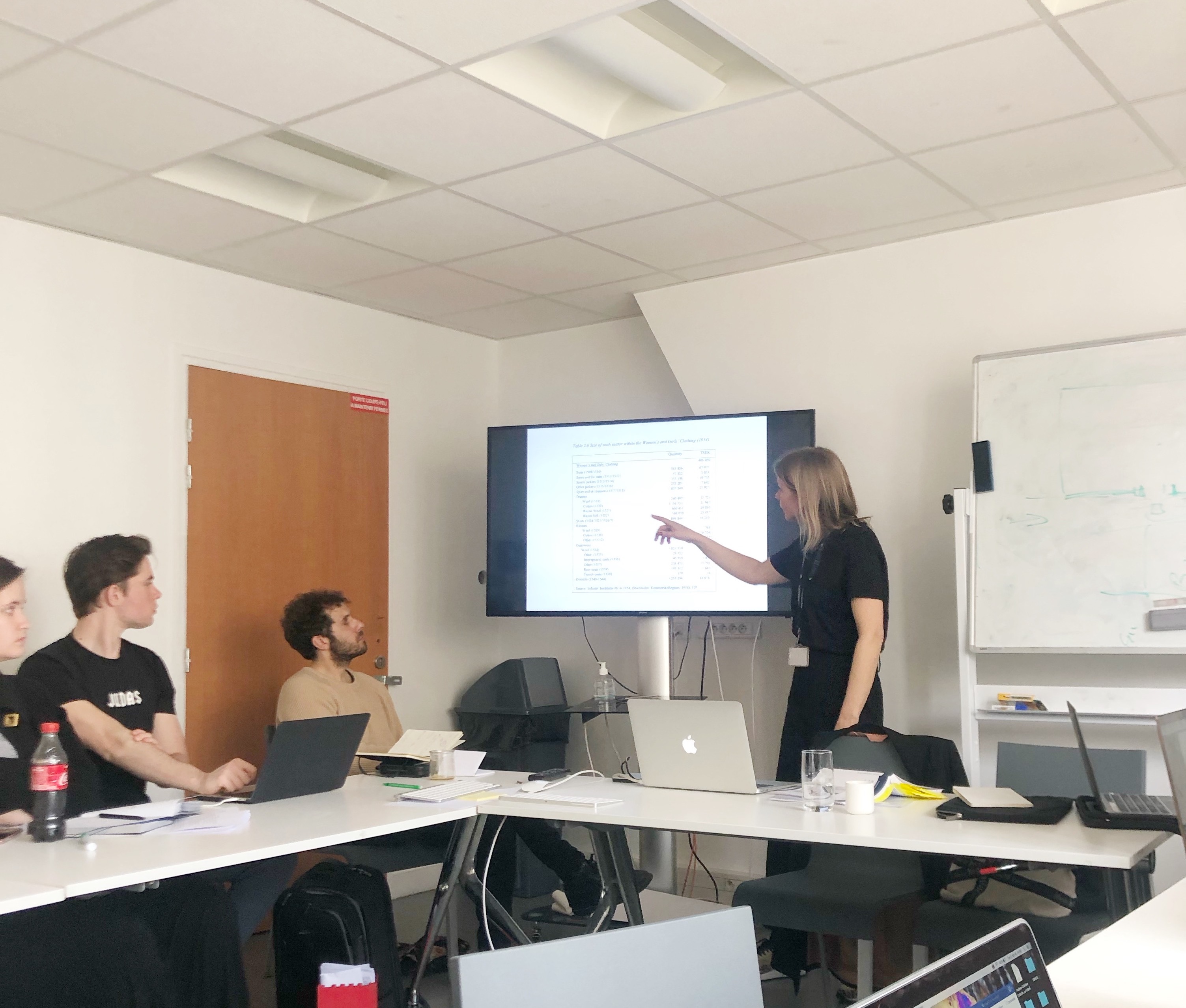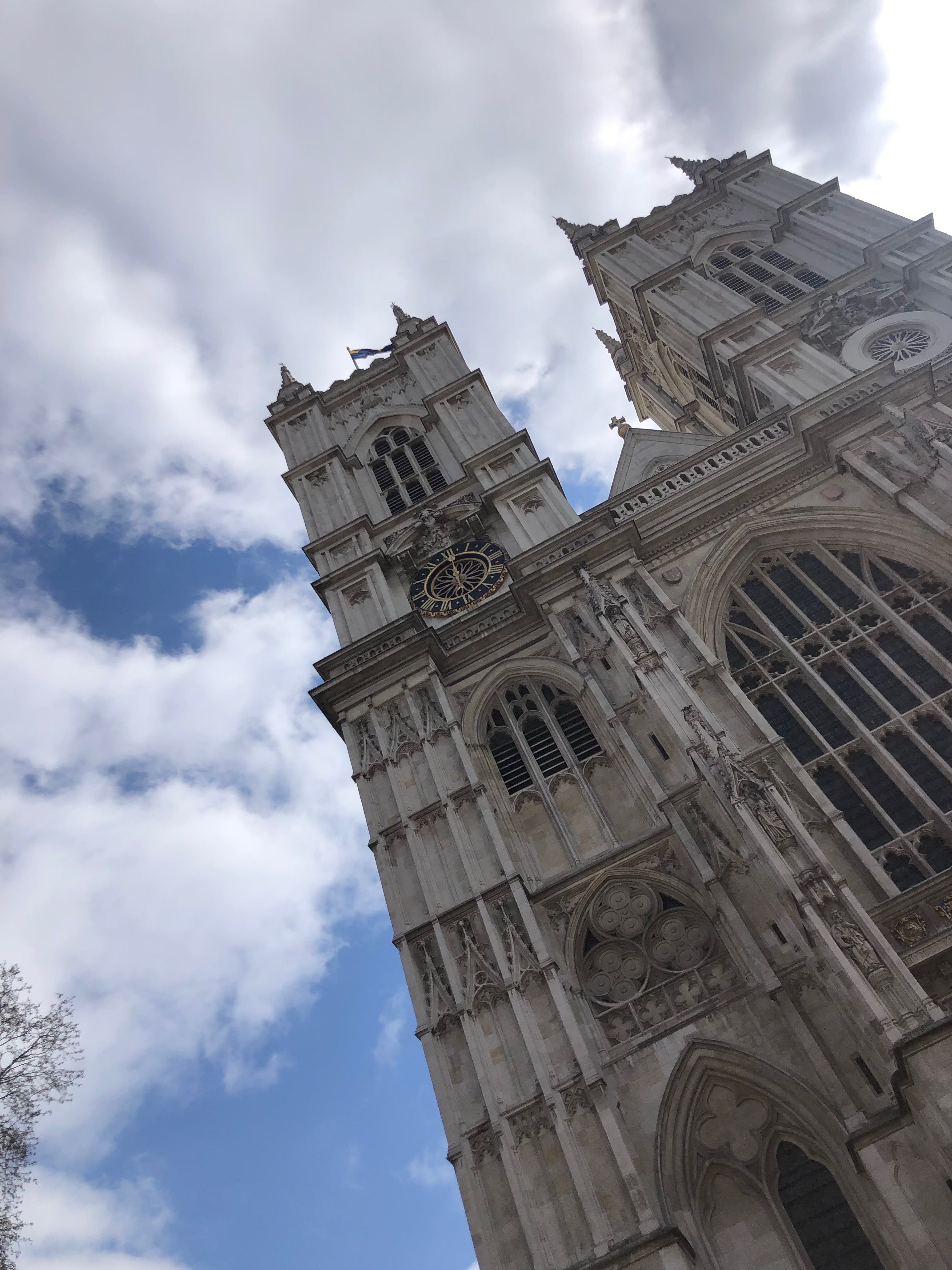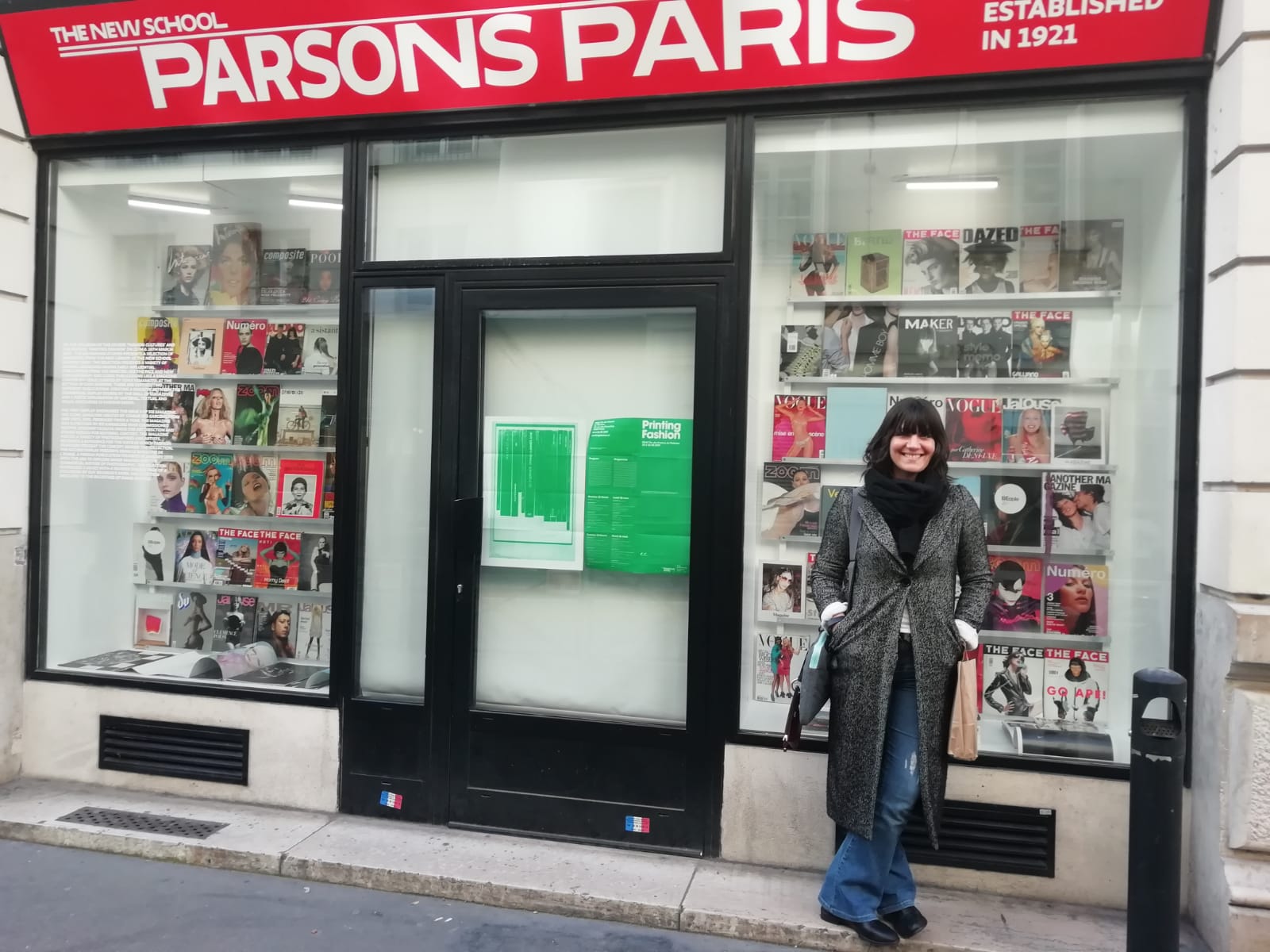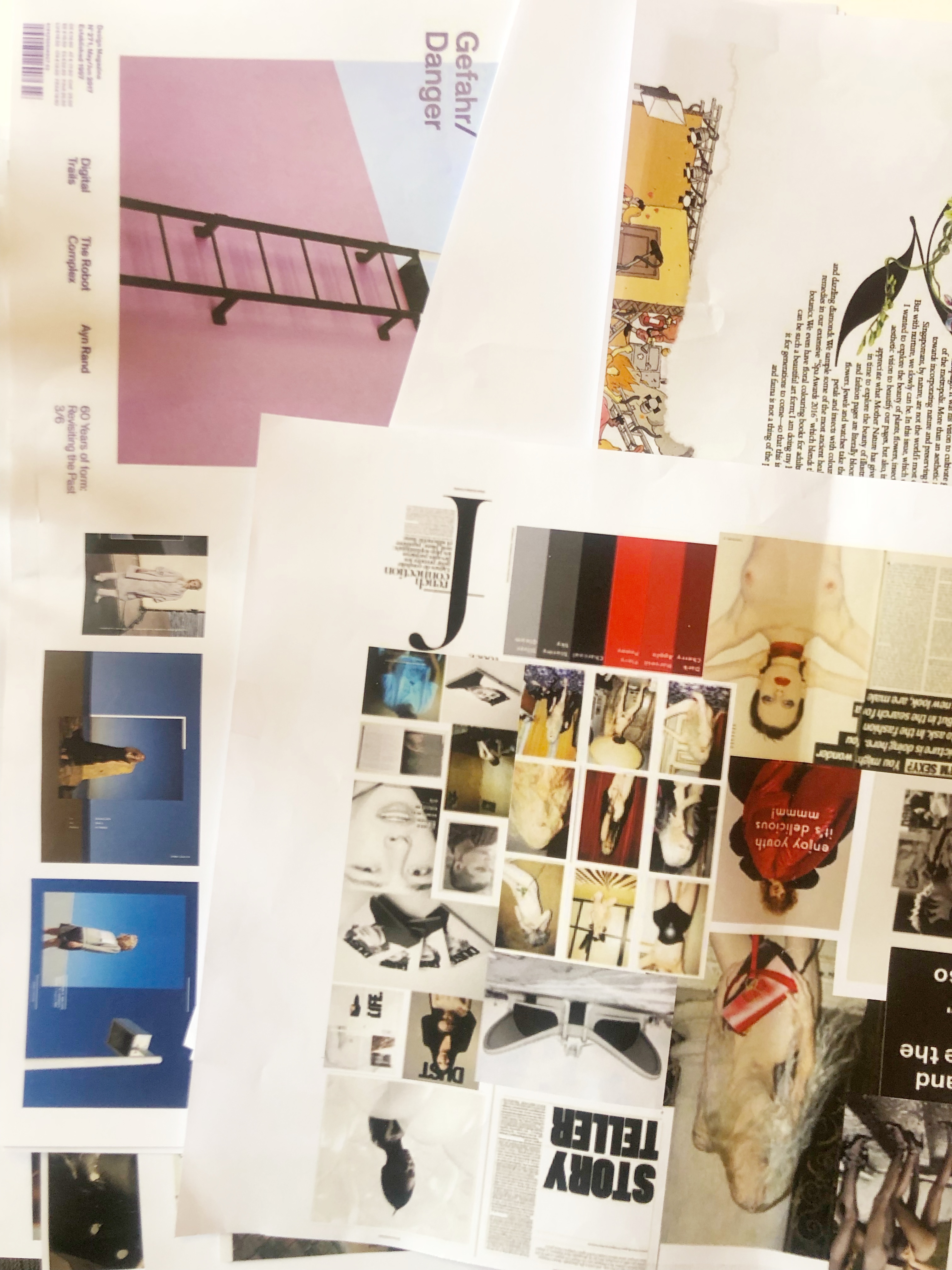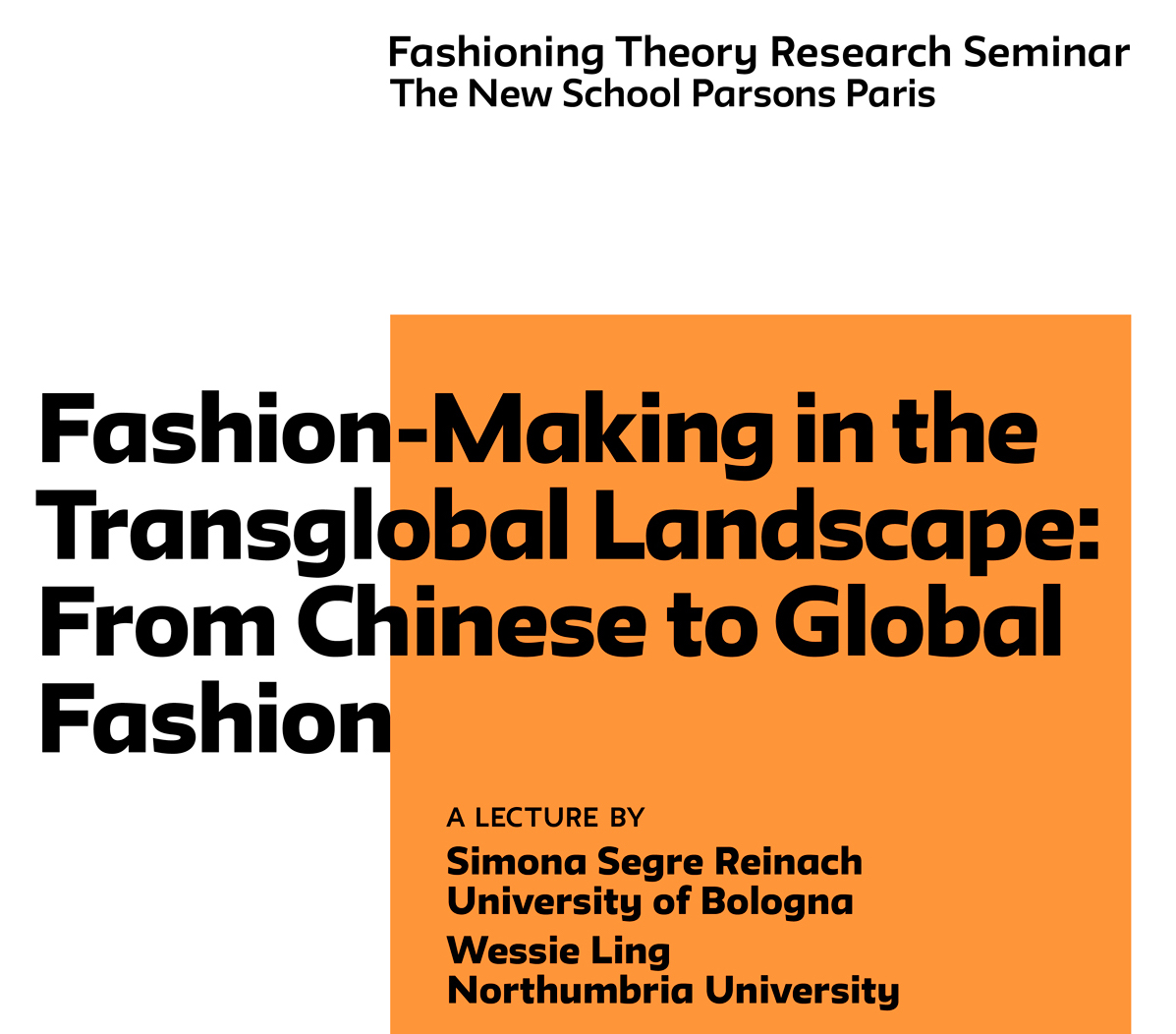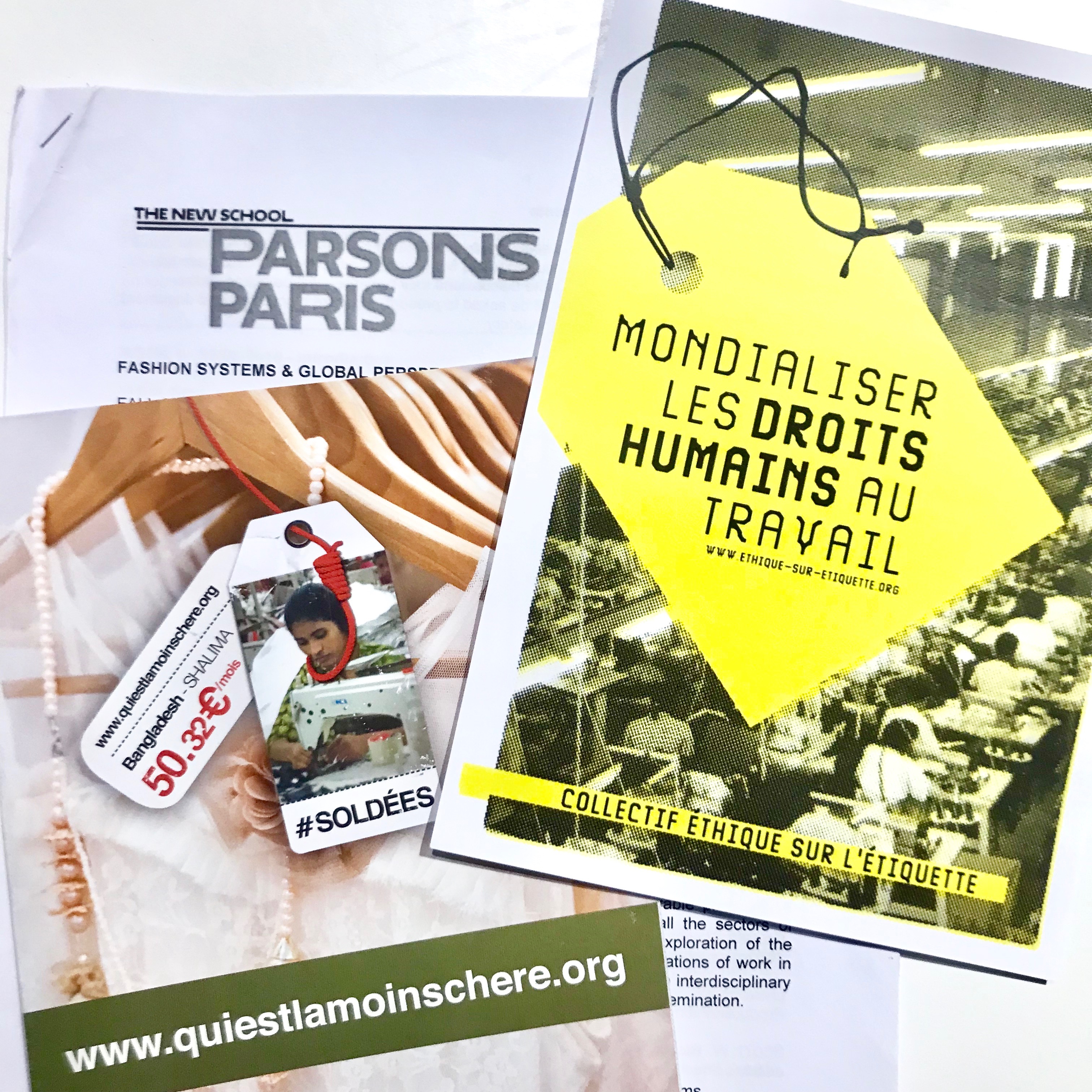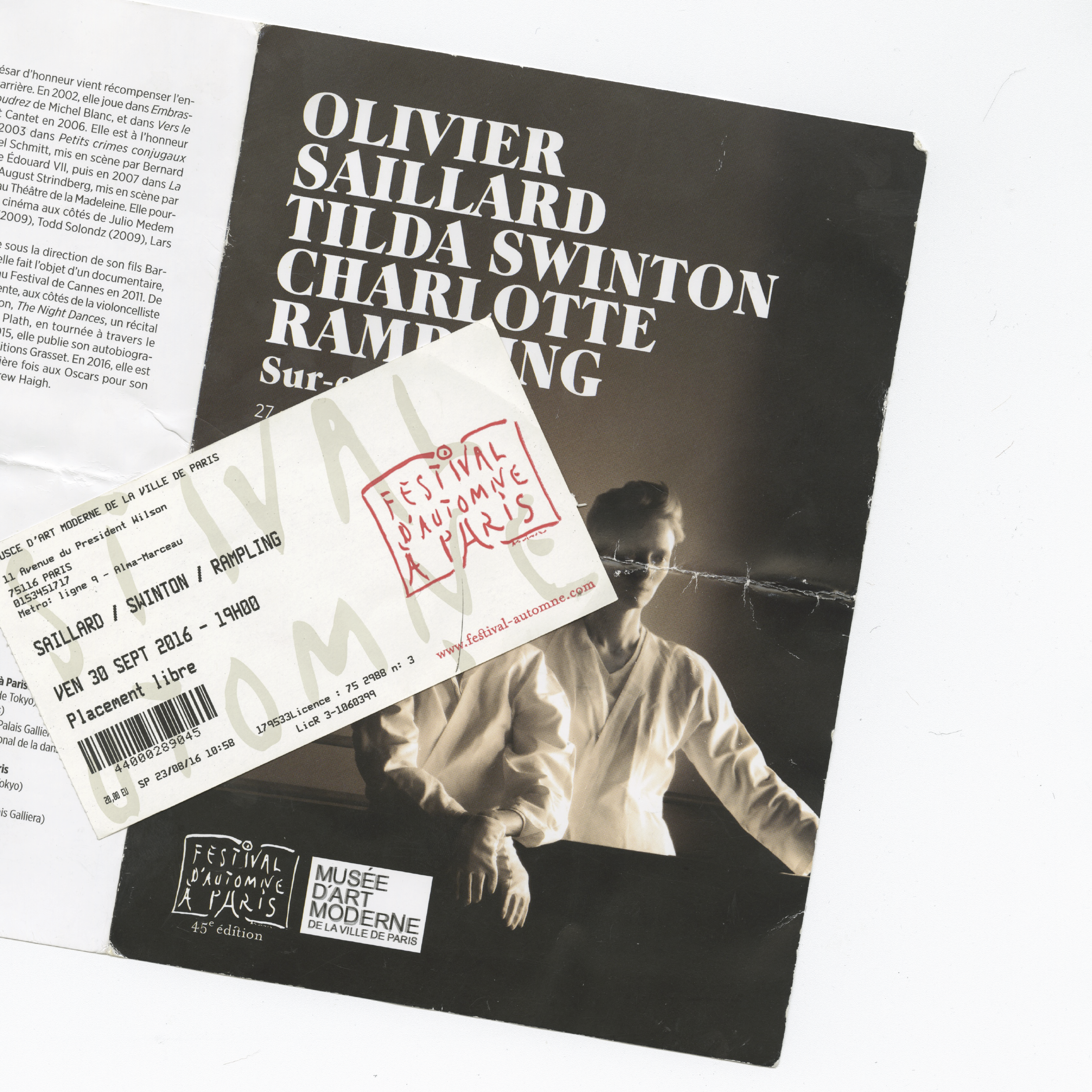
On September 30th, The MA in Fashion Studies attended the performance Sur-Exposition by Olivier Saillard, Tilda Swinton and Charlotte Rampling, held at the Musée d’Art Moderne de la Ville de Paris. The aim of the performance was to discuss the value of fashion photography, its overabundance and proliferation, and lastly its archival process.
Following previous performances like The Impossible Wardrobe (2012) or The Cloakroom (2014), Sur-Exposition featured the actress and performer Tilda Swinton who was joined by the actress Charlotte Rampling. After an initial moment of posing, Rampling and Swinton, by turns, tend to the audience, iconographic prints of the twentieth century embodied by black carbon rectangles recalling the original dimensions of a fashion plate. The original picture was not represented nor visible to the audience but only vocally evoked by Rampling and Swinton. The evoked images were by Man Ray, Mario Testino, Richard Avedon, among others; and were a selection of those photographs conserved in the collection of the Maison Européenne de la Photographie (Paris). Similarly to previous performances curated by Saillard, the spectator is asked to interact and make an effort. Here, the spectator is faced with the task to decipher iconic fashion photographs, which are named by Rampling and Swinton who also, in some cases, re-perform the poses and narratives of these iconic images. The minimalist scenography and their black and white clothing, exalt their posing and link the monochrome rectangles together. The performance seemed to stage photographs ‘in action’, while denouncing the neutrality of these iconographic memories by freezing them in black carbon plates. Carefully distributed in the space by Rampling and Swinton, these frozen black images compose an evocating archive of fashion photography. The spectator observed the spectra of these black plates that have randomly arranged throughout the room embodying both the consumption of fashion images and the possible narrative that these images may stimulate. Overproduction and overconsumption of fashion images are staged, while Rampling and Swinton, through their attentive gestures, recall the importance of the gesture and of the single moment of the shooting.
Similarly to previous performances, the performance problematizes the role of archiving and memory in fashion. Through this presentation, we were faced with the fragility and ephemerality of the history and practice of fashion photography while we were also reminded of its complexity. How are these photographic memories creating our past, our present and even our future?





